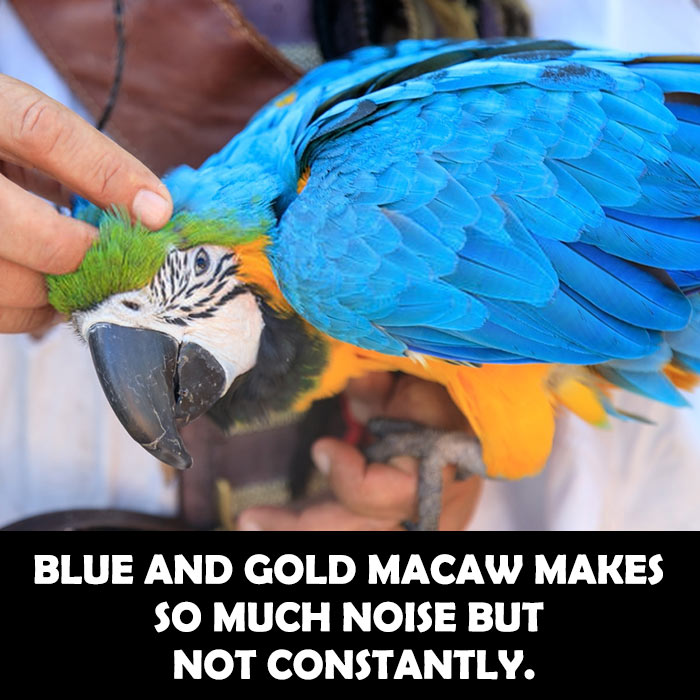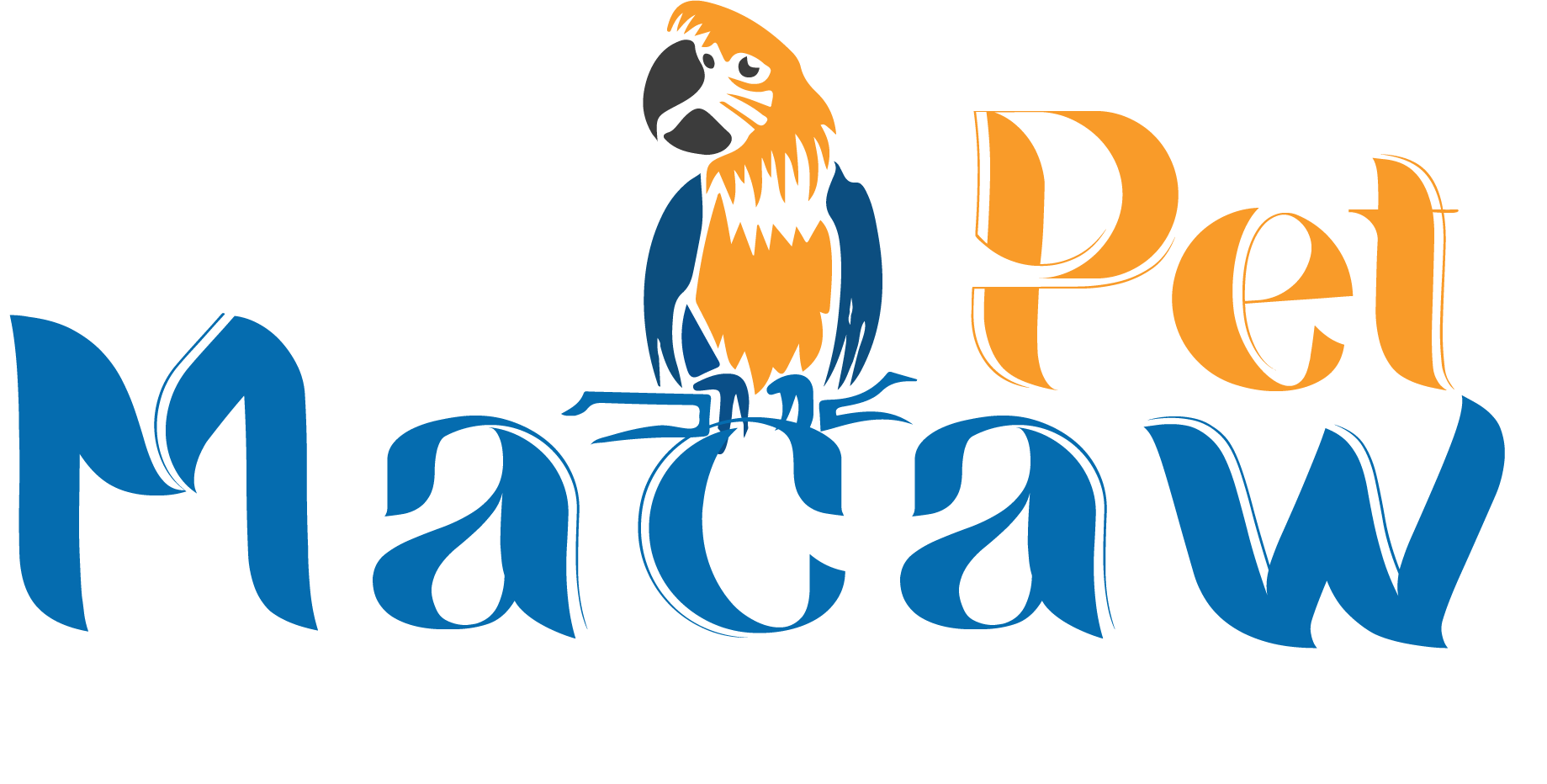Last Updated on August 13, 2022
Blue and Gold Macaws (Ara Ararauna) belong to a large group of Neotropical Parrots known as macaws. They inhabit South American rainforests and woodlands, especially the tropical rainforests, woodlands, and savannah of South America.
Blue and Gold macaws are incredibly smart and social parrots. They can sometimes be nippy, but they are always lively and entertaining. If raised with love and care, they make lifelong companionship as they are sweet, temperate, and sociable. But once you go into bonding, never think of abandoning them; otherwise, they can fall into depression.
- Scientific Name: Ara- Ararauna
- Kingdom: Animalia
- Family: Psittacidae
- Phylum: Chordata
- Class: Aves
- Genus: Ara
- Order: Psittaciformes
Appearance
Almost all of their feathers are blue, except for the head, which is covered with green feathers. They have a white face and black striped patterns around their eyes. Their irises are off-white.
There is a rich orange-yellow hue in their bottom, while the beak and feathers on the underside of its chin are black. They have gray and black, zygodactylous feet (two toes are pointing forward, and two toes are pointing backward).
In general, there is a slight variation in the colors of the bird’s underside, especially on the bottom of the chin. They have dark greyish Black beard feathers under their chin. Their face blushes pink when they are in a state of excitement.
Blue and gold macaws have a strong beak and dark black beak, cracking the nuts and breaking seeds easily. Their feet really help them to create balance.
Weight & Size of a Blue and Gold Macaw
They are 85-90 cm long and weigh about 900-1200 grams. Ther wingspan is about 102 to 112.5 cm.

Vocals
Blue and Gold macaws are noisy; they give loud calls and produce a variety of sounds. Their ability to produce different sounds makes them good talkers. They can learn many words and short phrases. Generally, they are noisy, but they can be trained to be less noisy.
Lifespan
Generally, Blue and Gold macaws live for 30 to 35 years. If they are raised in good care, they can live longer. The oldest known Blue and Gold macaw, “charlie,” celebrated her 112th birthday in 2011. [3]
Breeding Behavior
Blue and Gold Macaws are affectionate parrots and mates for life. Their Breeding season lasts from November till March. They are often seen as preening and feeding each other. By nature, they are monogamous, forming pairs and living with their mate for life.
They form their nests inside cavities in large palm trees. Their average clutch is about 2 to 3 eggs, and sometimes they lay only one egg. The female incubates the eggs for 29 days; both parents take care of the babies.
The baby macaws fledge after 3 months and remain with their parents for about one year. These baby parrots reach sexual maturity at the age of 3 to 6 years.

Population And Endangerment Status
Fortunately, Blue and Gold macaws are not endangered. Their current population is 100,000-200,000. [1] However, they are vulnerable to hunting and illegal trading. Like one of their sub-species, the Blue-throated Blue and Gold macaws had experienced in the past.
During the 1970s, their population was nearly wiped out from Trinidad when over 1000 birds were caught for illegal trading. [2] After that, many programs started working to increase their population. In 1999, these parrots were introduced from Guyana to Trinidad in the safest place known as Nariva Swamp.
Some biologists established breeding programs in Miami- Dade County, Florida, and Puerto Rico to retain their population further. In contemporary times, these parrots have been living in these areas under the protection program. Most of their populations now exist in the following regions.
- South and Central South America
- South American Rainforests
- Venezuela, south of Peru
- Guyana
- Trinidad
- Brazil
- Bolivia
- Tropical Woodlands
- Savannah
- Paraguay
- Miami-Dade County
- Florida
- Puerto Rico
- Mauritia flexuosa Palms
The major threats to Blue and Gold Macaw are illegal bird trade, colonization, deforestation, habitat destruction, poaching, and hunting. Blue and Gold macaws have lost a third of their suitable habitat within the previous three decades.
Hunting
The Blue and Gold Macaws are very charming blue parrots, and they often become the victim of hunting. Hunters hunt them to pluck their feathers for sale purposes. In some regions, due to excessive hunting, their population is moving toward its decline.
Illegal pet Trading
These spectacular large-sized Blue and Gold Macaws are high-demand pets. These magnificent parrots are frequently captured from the wild by pet traders.

Are They Good as Pets?
Absolutely yes, they become good pets. They are very entertaining, and they are always ready for fun activities. They can be trained to mimic human words and perform tricks.
Something that I personally love about Blue and Gold macaws is that they are easy to bond with. They are gentle with kids too, and they befriend other pets too. However, they should never be left unattended with kids or other pets.
The only drawback of having Blue and Gold macaws as pets is they scream a lot and need plenty of space for living. But that’s definitely a common situation with all large macaws. If you are looking to buy a pet macaw, you are not going to regret it.
What Do They Eat?
They mostly eat fruits and nuts in the wild. Their large and strong beak enables them to crack and crush nuts easily. But in the wild, they need a more diverse diet. They can be served a mix of fruits, vegetables, seeds, grains, and nuts.

How Much Do They Cost?
Typically Blue and Gold macaws cost $500-3700. Their cost depends on age, behavior, and ability to talk or dance. Usually, trained macaws cost around $3700 or more. The babies cost $500-1000.
Other Similar Species
Blue and Gold macaws have sub-species like:
- Bolivian Blue and Gold macaw
- Blue-throated Blue and Gold macaw
- Lutino Blue and Gold macaw
- Albino Blue and Gold macaw
The Bolivian Blue and Gold macaw and Blue-throated Blue and Gold macaw look very similar to the Blue and Gold macaw. Whereas the Lutino Blue and Gold Macaw and Albino Blue and Gold macaw have different colors but similar structure and size.
Moreover, they have many hybrids produced by cross-breeding Blue and Gold macaws with other species like Hyacinth macaws, Scarlet macaws, and Military macaws.

Final Thoughts
Blue and Gold macaws are appealing in all ways; their colorful feathers and charming nature makes them a must to keep. If you are looking to buy a macaw, choose Blue and Gold macaws.
Bilal is an aviculturist who loves to write in free time. His personal experience with bird care and breeding enables him to share valuable tips. So far, he has contributed more than 100 blogs to this site.
His goal is to promote bird-keeping and save endangered species.
